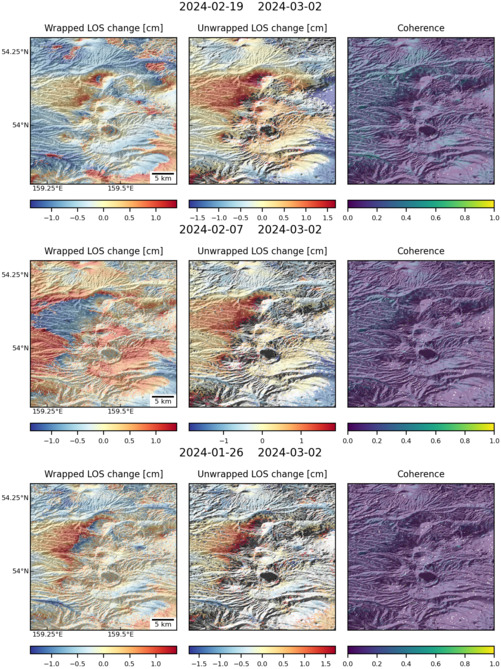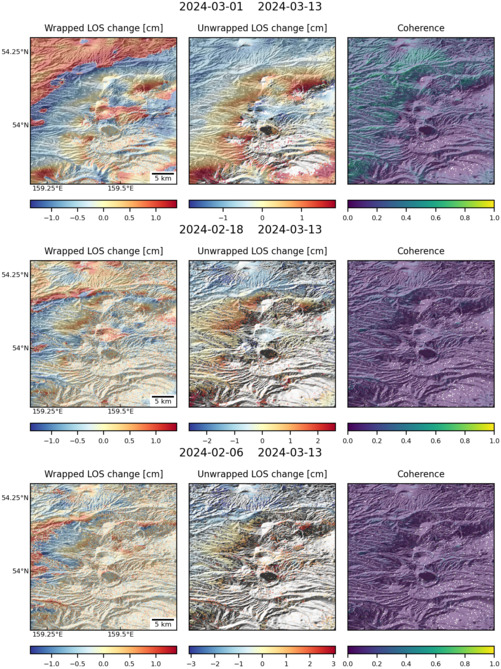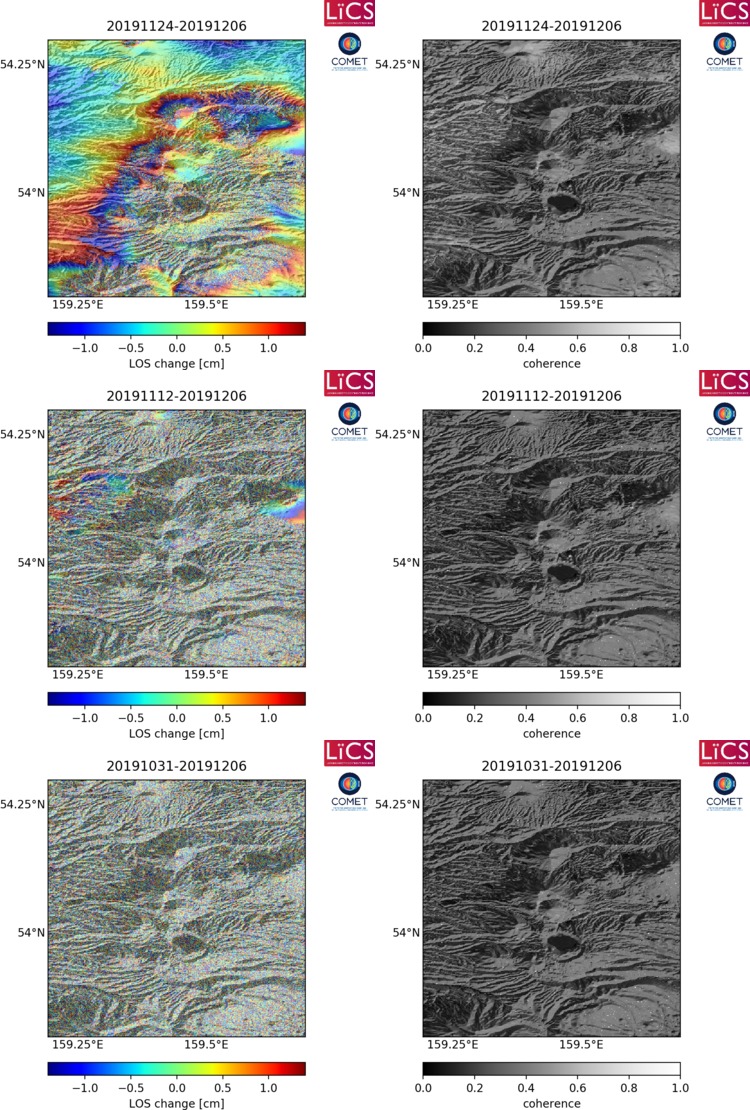Observations of Deformation
| Volcano number: | 300130 |
|---|---|
| Region: | Kamchatka and Mainland Asia |
| Country: | Russia |
| Geodetic measurements? | Yes |
| Deformation observation? | Yes |
| Measurement method(s): | InSAR, Levelling, triangulation |
| Duration of observation: | 1975 - present; 1992 to 2003 (InSAR) |
| Inferred cause(s) of deformation: | Magmatic |
| Characteristics of deformation: | Repeated geodetic measurements since 1975 revealed ongoing activity in Karymsky Volcanic Center (Walter, 2007). At a small scale, co-eruptive subsidence has been measured during an eruptive phases in (Maguskin and Sharoglazova, 1993). |
| Reference(s): | Zobin, V. M., Levina, V. I., & Maguskin, M. A. (2003). Seismicity and crustal deformation preceding the January 1996 eruptions at Karymsky Volcanic Center, Kamchatka. Bulletin of volcanology, 65(7), 477-485. |
| Pritchard, M. E., & Simons, M. (2004). Surveying volcanic arcs with satellite radar interferometry: The central Andes, Kamchatka, and beyond. GSA Today, 14(8), 4-11. GSA Data Repository Item 2004139. Tables DR1 and DR2 and Figures DR1–DR3, is available on request from Documents Secretary, GSA, P.O. Box 9140, Boulder, CO 80301-9140, USA, editing@geosociety.org, or at www.geosociety.org/pubs/ft2004.htm | |
| Smithsonian Institution Global Volcanism Program http://www.volcano.si.edu/volcano.cfm?vn=300130 | |
| Walter, T. R. (2007). How a tectonic earthquake may wake up volcanoes: Stress transfer during the 1996 earthquake–eruption sequence at the Karymsky Volcanic Group, Kamchatka. Earth and Planetary Science Letters, 264(3), 347-359. | |
| Location: | 54.049, 159.443 |
| REST API endpoint (JSON): | https://comet.nerc.ac.uk/wp-json/volcanodb/v1/volcano/5352 |
Latest Sentinel-1 Data

Size: 501px x 669px (174.05 KB)

Size: 501px x 669px (172.78 KB)

Size: 750px x 1110px (296.02 KB)
